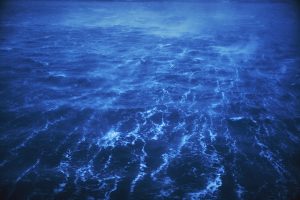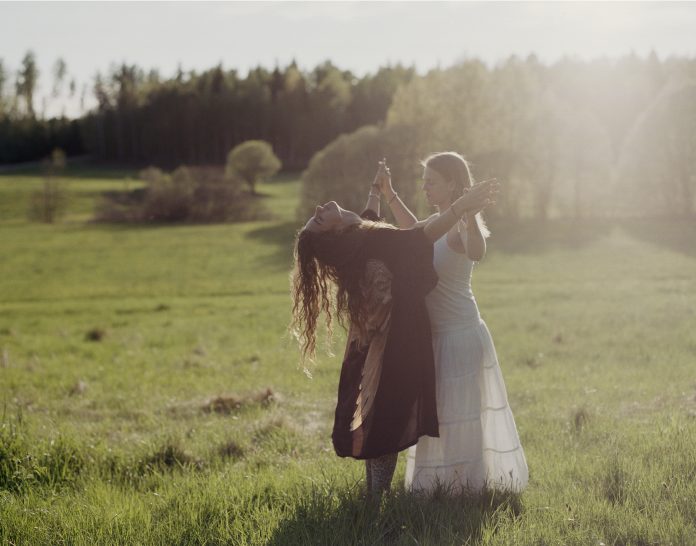(THIS ARTICLE IS MACHINE TRANSLATED by Google from Norwegian)
PHOTOGRAPHERS: Elin Berge and Chris Maluszynski, Sweden; Eivind H. Natvig and Knut Egil Wang, Norway; Marie Hald, Denmark and Juuso Westerlund, Finland
PHOTO EXHIBITION
Moment Agency is a group of photo documentary filmmakers who since their establishment in 2002 have included photographers from Norway, Sweden, Finland and Denmark. They work both individually and together and have won several high-profile international photo awards. Through photo and video works that are now on display at the exhibition Almost Perfect at Västerbotten Museum in Sweden, they are revealing the core values of the shaky Scandinavian welfare model. And it is not only the system itself that falters – also the confidence in the welfare state is declining.
Almost Perfect forcing thoughts into a deep reflection on what our "social contract" entails
På road to slaughter

Project:
In One Hundred Years All is Forgotten
(Almost Perfect)
PRESS IMAGE FOR EDITORIAL COVERAGE OF PROJECT
Photo by: Eivind H. Natvig / INSTITUTE
Marie Hald documents vulnerable and vulnerable youth in their first encounter with alcohol. The gymnasium discotheque is as bad as the vest for the parents who have organized this Nordic transition ride. Now the grown ups of the young, lying around, are half dizzy with the alcohol. In other words, this substance accepted by the larger community is introduced into a kind of officially celebrated passage as young people take the step into the adult world.
Strong red and orange tones draw us to the portrait of a purung Lolita with a cocktail
drink in hand. The color palette and her beauty make the girl reminiscent of a newly sprung exotic flower. Equally, many of the images give a sense of fatal hopelessness and unprotected exposure – as if the young portrayed were paralyzed on their way to the butcher's bench.
Høperformance is power
Chris Maluszynski works in the opposite of the scale, using irony and humor in his pictures of Swedish elite. Wealthy boys snob themselves with their "noble", water-combed limbs – "success hairstyle", this phenomenon, which in noble and other celebrated circles is considered a fashionable indicator of power. Maluszynski captures this rich man's harsh and pompous hair symbol in a way that quickly arouses associations with how Margaret Thatcher's hairstyle increased in height and volume as her increasingly powerful UK position.
High are also the hedges in Nykøbing Mors – on straight lines they encircle townhouses on townhouses in Axel Sandemose's birthplace. Knut Egil Wang has been in the small Jante town, where the slate mirrors have had their permanent place on the house walls since long before the surveillance cameras saw the light of day. This is how the citizens of the city get most of what takes place in their neighborhood. Is it yet the Janteloven that is behind this need both to supervise and to integrate into the tight ranks of houses, with identical height even on fences and lawns?
Wang's text explains: "The ideal of equality is the key to explaining why the Scandinavian countries have less social problems and are often considered the best countries to live in. And being equal means not being out of the crowd too much."
The streets are almost empty. What is most strongly expressed in these images is also the tyranny of equality – and loneliness.
Reboot the planet

Finnish Juuso Westerlund stands out from the others by showing a video work. "I was born in 1975 and am one of those who grew up in Almost Perfect – the welfare state where everyone pays willingly to the community, everyone has access to higher education, and social and economic safety nets assure citizens, ”he says.
But a lot has happened since the 80 and 90 years: Many people in Finland have lost faith in the old social model, and almost want a system collapse. They believe, among other things, that the environmental challenges we face can only be solved by man returning to nature.
Westerlund's film is as long as Cooper test – a 12-minute running test originally created for the US military in 1968, but also widely used in primary schools in the Nordic countries. With this as a framework for his film, the artist makes a point of how the power of habit makes one stop asking critical questions. Westerlund is himself an ongoing review figure in the film, and has, thought-provokingly enough, chosen to represent the average man in Finland who mistrusts the system they have all benefited from. The other two are more obvious candidates: a neoliberalist and a hunter.
The environment that goes to hell is also the theme for Eivind H. Natvig's Northern Norway pictures [see below]. Seas and coastal landscapes threatened by pollution are the motives he has embarked on – where reverence and respect for the forces of nature are evident: nature's response to the abrupt changes taking place in the atmosphere, the results of which have already begun to show.
Sømaturity in time
Proud, strident and free bodies. The description does not cover the down-to-earth, unhinged, non-sensational and sensual approach photographer Elin Berge has to his portrayed women [see main image]. These appear in Eva's costume, out in the free nature. The trust between the artist and the photographed is obvious; at the same time it is somewhat permissible in the apparently non-posing bodies. The camera observes, but not as a viewer, rather as a random witness. Of the total six Nordic photographers represented in the exhibition, this is the one that best meets the spirit of the time, one year after MeToo.
"The female body has been an invaded landscape," Berge says, letting her sharp and pictorial statement be accompanied by photographs of sister communities in naturally tempting nudity. Feminine and undressed her images in an almost intoxicating way and evoke an immediate desire to roll in the grass with the depicted.
“It started at a women's festival in Engsbacka, where I was introduced to the movement Female Awakening. All the time, invitations to new, spontaneous women's circles came, ”says Berge. “The women's movement has taken back many of women's rights – the right to vote is one. Now the trip has come to the body and spirituality, ”she says. The spiritual revival of women has spread rapidly, thanks to social media – and in particular the various subject bait lures: "#SacredSisterhood", "#FeminineAwakening", "#SacredWomb".
"Why English?" I wonder. "Because there is a suspicion in Sweden of anything reminiscent of religion," replies Berge, "and then the use of English creates the necessary distance." Her pictures, on the other hand, are intimate and close.
And Västerbotten is just a car ride away, so why not consider yourself? Moment Agency has a lot to offer, and this is definitely not the last time we hear from them.
Almost Perfect is displayed in the Västerbotten Museum during the period 20. October to 3. February.


